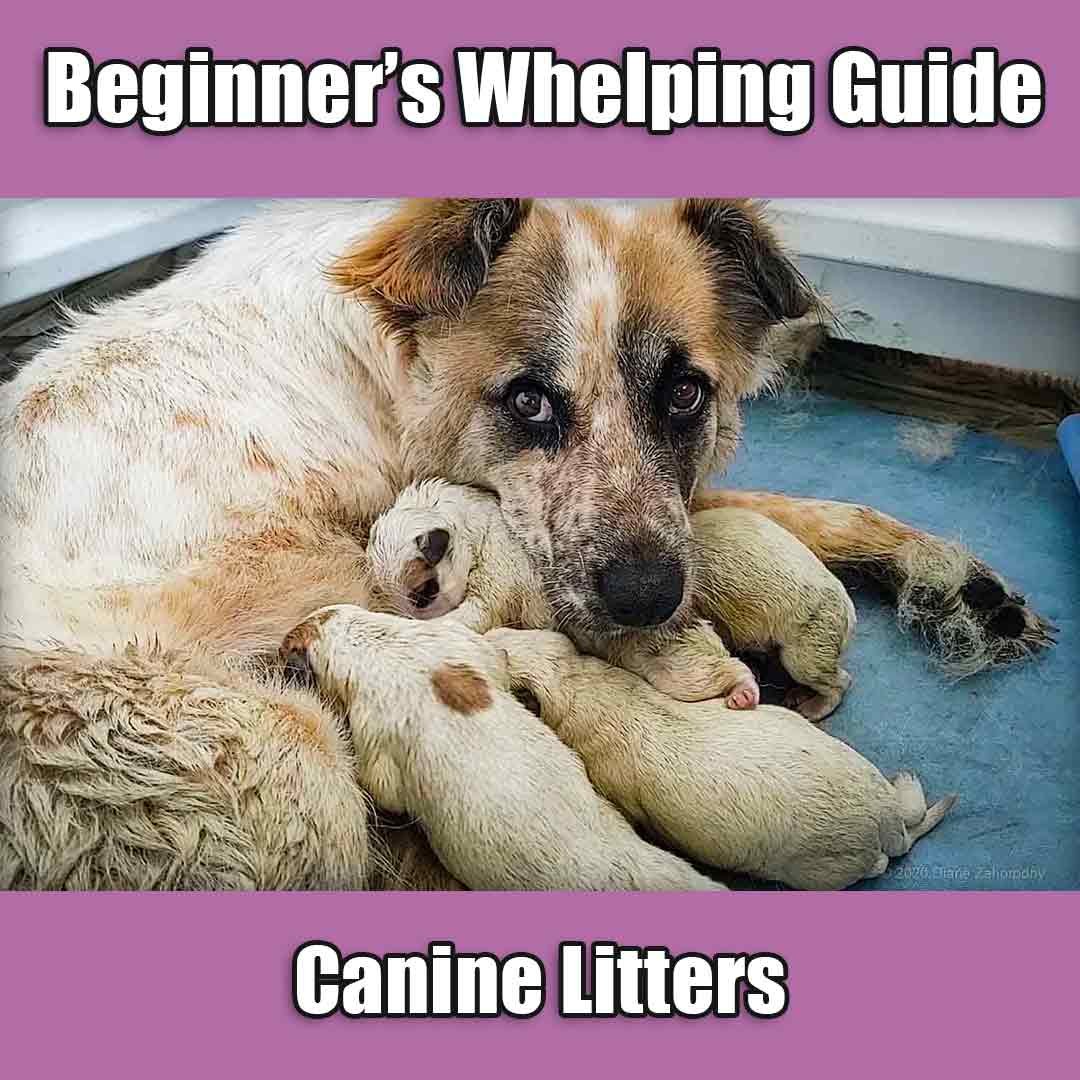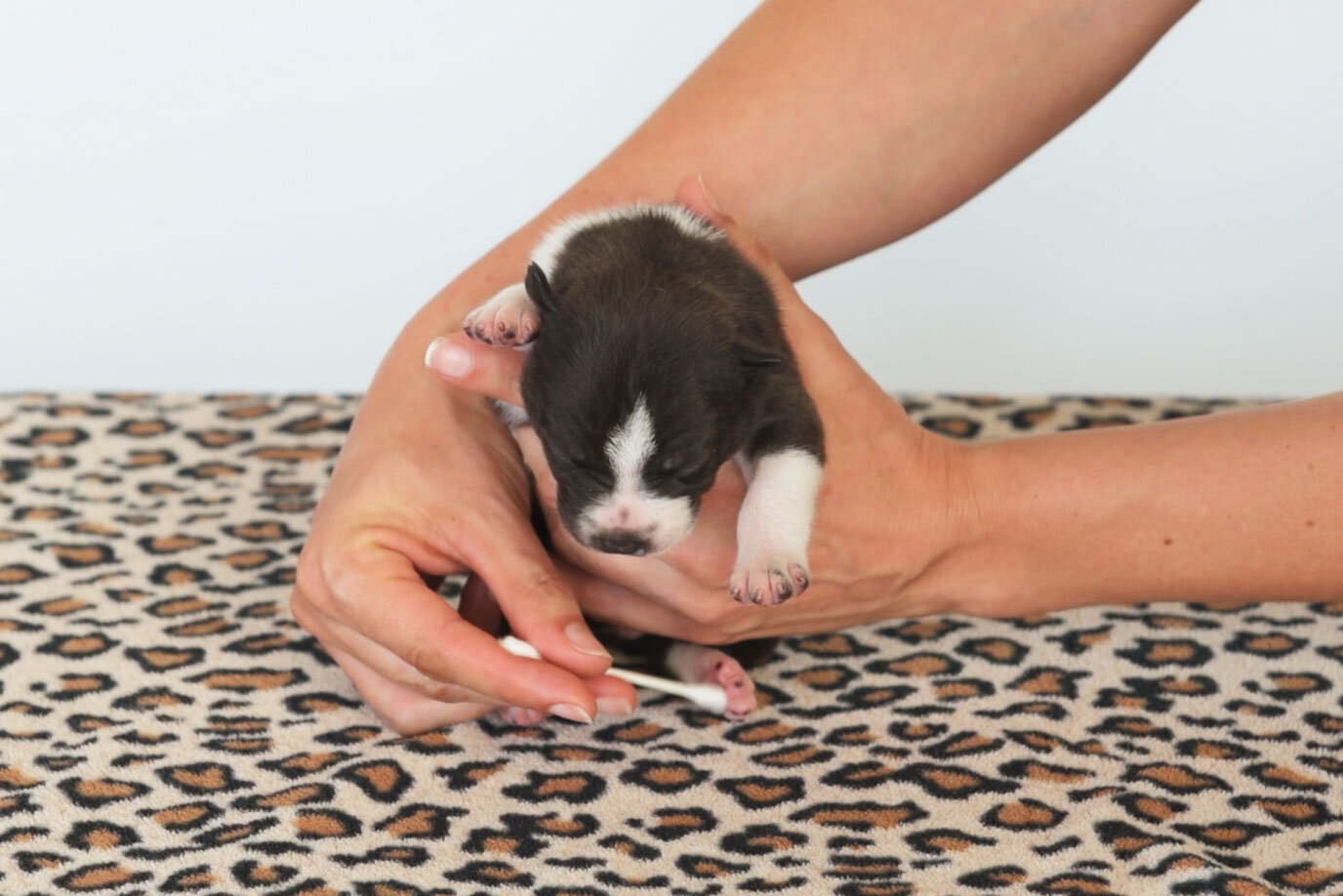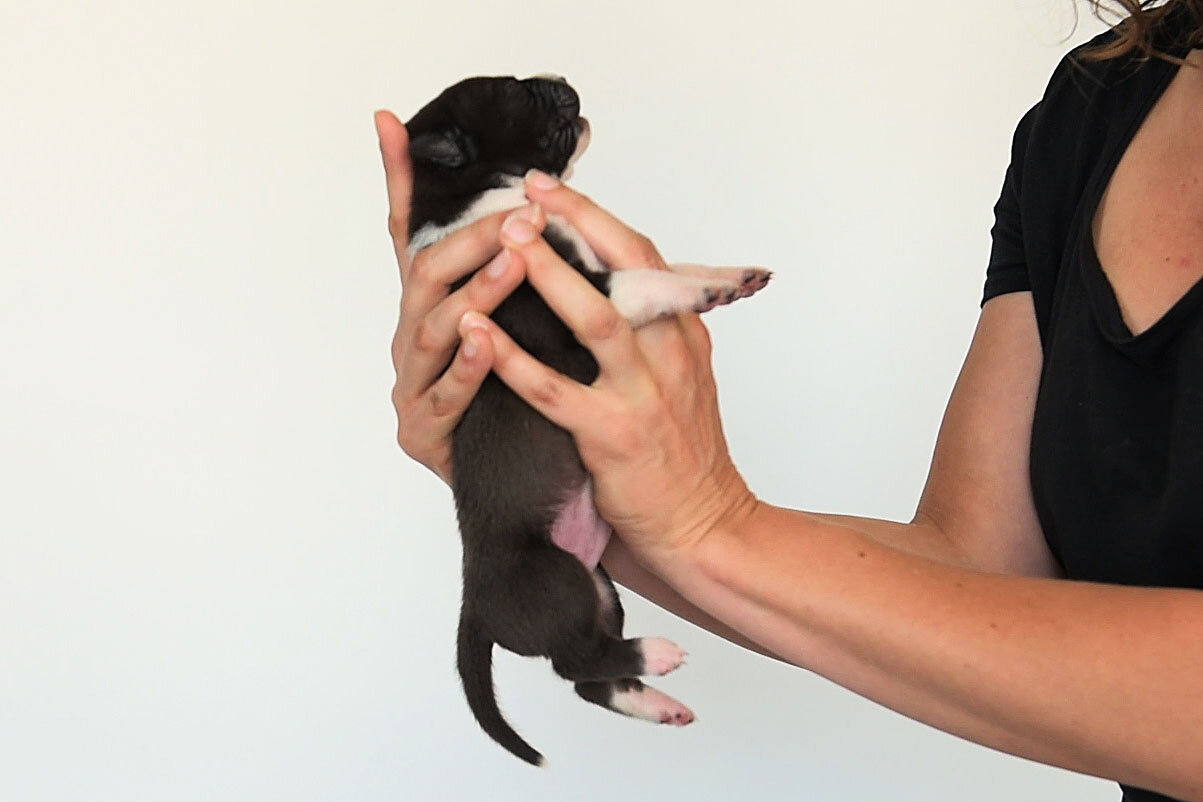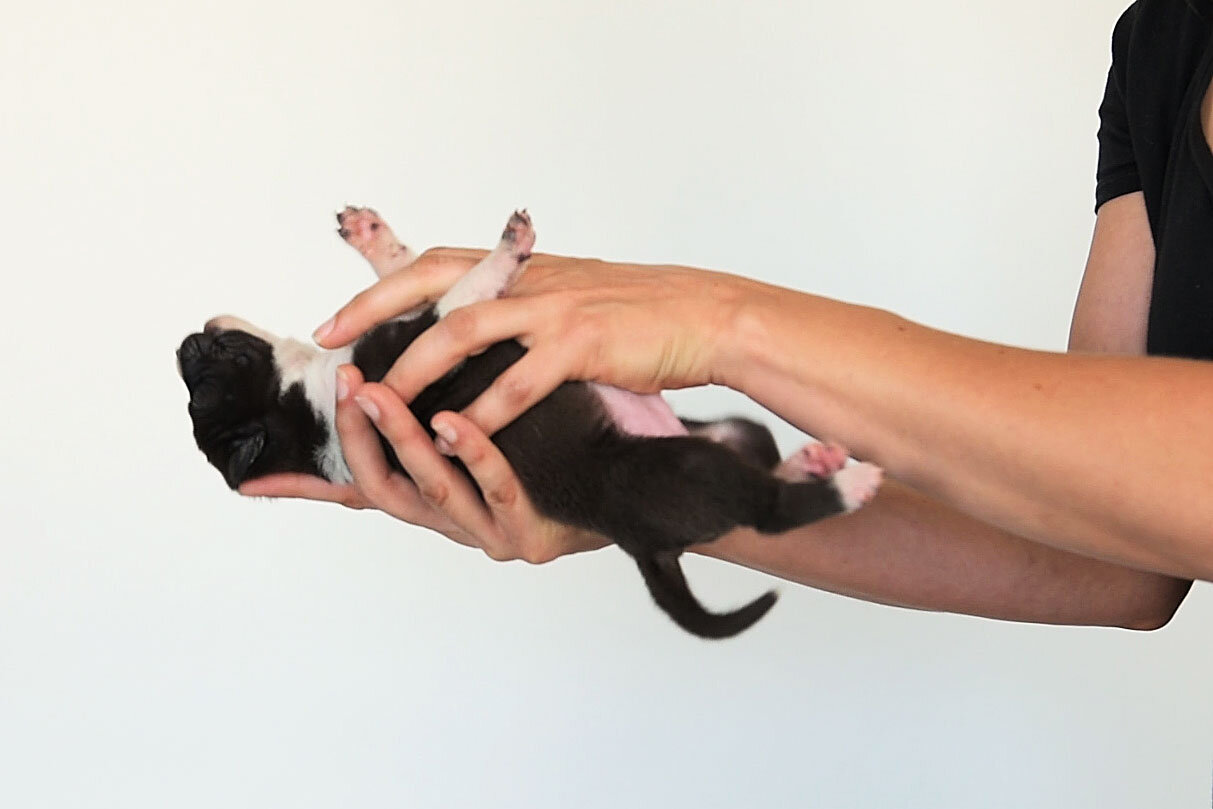The Key to Stronger Puppies and Kittens - Neonatal Handling
/
EDIT 10/6/21: The title of this article used to be ‘5 Secret Steps to Stronger Puppies and Kittens - Early Neurological Stimulation’ but since writing this article, I have changed the message…a bit. Although there is a lot of research showing that neonatal handling results in adults who are less sensitive to stress, there is actually no evidence that Early Neurological Stimulation specifically offers any benefits. Breeders have been doing ENS for decades and many swear by it so this doesn’t mean it doesn’t work. What this could mean is that ENS has just not been studied well enough. It could also mean that it’s the right idea (neonates should be handled) but that we should be gently handling them in a larger variety of ways, more often and for longer periods of time.
Benefits of Neonatal Handling
Neonatal handling serves to stimulate a puppy or kitten’s neurological, endocrine and circulatory systems at a point in life when their brain’s are undergoing massive development.
But isn’t stress traumatizing for tiny little puppies? No, mild, gentle handling is not traumatizing. Human mothers handle, talk to and interact with their babies all day long which is essential for development and bonding. And when babies are tired or overstimulated, they just fall asleep. Even though we are a different species, the same general rules for socializing apply to puppies and kittens, too.
Subscribe & Get Some Freebies!
Beginner’s Guide to Whelping a Litter of Puppies
Foster Pickup Packets
Medication Log
Neonatal Handling & Weight Log
And more!
Studies have shown that exposing social mammals to mild stress will actually increase their ability to tolerate stress as adults. It’s like inoculation against stress. For dogs and cats, this translates into pets that are more able to adapt to their lives in the human world. This doesn’t mean they will never be afraid or stressed but it does mean they will be better equipped to recover from stress. An inability to effectively cope with stress eventually leads to emotional and behavioral problems such as depression, anxiety and aggression. According to the American Veterinary Society of Animal Behavior
“Behavioral problems are the greatest threat to the owner-dog bond. In fact, behavioral problems are the number one cause of relinquishment to shelters. Behavioral issues, not infectious diseases, are the number one cause of death for dogs under three years of age.“
The great news is that by handling our neonatal puppies and kittens, we can raise dogs and cats that are more physically and emotionally prepared to deal with whatever life throws their way. This will increase quality of life for everyone involved, reduce surrenders to shelters and, most importantly, prevent unnecessary euthanasia.
Does This Mean Adult Dogs That Weren’t Handled Are a Lost Cause?
No way. Almost every dog we’ve ever had was adopted from an adult shelter and I highly doubt their were handled as neonates. I think many dogs are surrendered due to a poor match with their family. A dog that barks all day is a problem if their owner is away but not so much for the owner who is home or takes their dog to work. A dog with lots of energy would go bananas with a low key family but thrive in an active one. Plus, it is possible to rehabilitate or learn to manage dogs with behavior problems but it does take a bit of work and commitment.
But, puppies are A LOT OF WORK, too. There is something to be said for getting an adult dog that has already grown out of their awkward, bitey, crazy puppy stage even if they have some quirks. But with that said, my dream is that every puppy and kitten gets socialized, reasons for surrendering animals to shelters start to vanish and shelters become brief way points for a smaller and smaller number of animals.
History of Early Neurological Stimulation
Early Neurological Stimulation is a method for neonatal handling that involves a set of 5 exercises performed for 3-5 seconds each, once per day from 3-16 days old. Responsible breeders have been doing this with their litters for decades and many of them swear by it. ENS originated from the Bio-Sensor or Super Dog program in the military and was popularized by Dr. Carmen Battaglia in the mid 90’s. Interestingly, the Bio-Sensor military program lasted less than a year (which I’m told, in the military, could be for a variety of reasons).
So if we have been domesticating dogs for a long time and we know that neonatal handling has benefits, why haven’t there been more studies on ENS? The challenge with scientific research in large animals like dogs (as opposed to mice) is that it is very expensive, time consuming and animals often have to be 'sacrificed' (killed) so their physiology can be studied and what dog lover wants to do that?
During an interview, I asked Dr. Ian Dunbar about his thoughts on Early Neurological Stimulation and he had this to say:
“There’s no evidence to show it works at all but it’s the right idea”.
Does Neonatal Handling Really Work?
Professional dog trainer, Julie Case, has been training pet, service and police dogs for about 30 years. Her training facility, Ultimate Canine, raises about 100 school and service dogs each year and has raised over 1400 service dogs, school dogs, police dogs, funeral home dogs, etc. She, her staff and volunteers handle their puppies from a very early age. Some people are surprised by what she does but when you see the results, it’s hard to deny.
Julie with a group of children handling 10 day old puppies
A 2nd grade class interacts with ~4 week old puppies
The puppies that Julie raises are heavily socialized and the results are remarkable
More examples of socialization
Before Handling Neonates
Before a neonatal handling session:
Hold the neonate and offer their butt to mom so she can lick them and they will pee and poop. I call this the ‘Poo Poo Platter’ : ) Gross, but necessary so they can be comfortable during handling
Be sure they are not hungry
If Mom is stressed by people handling her puppies, have a familiar person take her for a walk during the exercise
NOTE: If they are very distressed by handling and will not settle down but you know they aren’t hungry or have to go to the bathroom then something else may be wrong, in which case, handling should be postponed until the source of distress is identified. You may need to call your vet.
Handlers should:
Remove their shoes before entering the whelping area
Wash their hands
Have showered and changed their clothes since they last visited a dog park, animal shelter, vet clinic or been around a sick animal.
How To Do Neonatal Handling
Regardless of what techniques you use, the main point is that puppies and kittens should be gently handled everyday in a variety of ways, 5 minutes 1-3 times a day, by several different people starting at three to five days old. This may seem like overkill but the neonatal period is a short, special window of time. Their brains are developing rapidly and have tremendous potential to become more complex and better able to process different stimuli i.e. stress. We should continue to handle our puppies throughout their lives but the neonatal period is when true imprinting occurs.
Puppies and kittens are born blind and deaf but their eyes and ears will open somewhat gradually so around 10 days old, you can also start introducing loud, banging sounds and exposure to sunlight. They will feel vibrations through the floor and, as their ears start to open, they will hear muffled sounds. They should be handled by men, women and children of all ages, shapes, sizes and backgrounds. Only select children that will listen to instruction so they don’t accidentally hurt a puppy and they should be closely supervised. Each thing you do with them should last about 10-20 seconds and each puppy should be handled by each person if you’re working with a group.
5 minutes 1-3 times a day
Start at 3-5 days old (for healthy animals)
Handled by 10-20 different men, women and children each week
Each person handles a puppy for couple minutes and passes to next person
NOTE: If your litter is stressed for any reason (illness, travel, poor weight gain, etc) you might just cuddle and stroke them in ways that calm them rather than adding more stress.
Ideas for Neonatal Handling
All exercises should be done fairly gently and slowly. No sudden movements and return them to Mom for a little comfort after
Touch their bodies: Stroke and gently tug the skin on their back, belly, sides, neck, tail, legs, face, ears and eyes (NEVER force their ears or eyes open)
Desensitize them to nail clipping: Squeeze each foot, toe and nail
Desensitize them to mouth exams, teeth cleaning and medicating: Hold their mouth open, rub fingers along their gums, hold their tongue, pretend to put a pill in their mouth
Hold in strange ways: Hold them on their back, belly, side, right side up and upside down and under their shoulders so their butt dangles
Do weird stuff that humans do: Blow in their face, boop their nose, hug them in your arms, cuddle them under your chin, hold them against your throat and talk or hum, pat their head and body
Strange sensations: Blow warm air on them from a hair dryer, touch your phone to them and have it vibrate, hold the body of a nail grinder (not the grinder) against their feet so they feel the vibration, rub them with a towel, place them on top of a running washer or dryer, place them on a frozen or warm towel
Scents: Let them smell clothing that has been worn by family members and strangers (be sure those clothes have not been around sick or potentially sick animals), towels rubbed on other healthy animals, dog toys, spices, the substrate you plan to use for potty training with a dab of mom’s pee on it, hold them near an open window
Noises and vibrations: Make loud, banging noises: drop a book on the floor, stop your foot, jump, have kids run around making noise, run a vacuum, slam a door, bang pots together, put puppy inside something and tap on the outside, clap your hands, sing a song loudly and terribly
Be creative! Whatever you do, it should be mildly stressful and never painful. They may complain, seem to enjoy it or have no reaction at all. All are ok. If they don’t seem to like it, make it brief (5-10 seconds) and if it doesn’t bother them you can do it for longer.
Don’t put them down until they are calm. If a puppy struggles during handling, you might be inclined to put them down immediately but this will teach them that, if they don’t like something, all they have to do is wriggle out of your hands to make it stop. So if a puppy struggles or complains, hold it gently against your chest near your heart until it settles down.
How to do Early Neurological Stimulation
I have nothing against ENS. That was how I started handling my puppies. I still use all 5 of these exercises but in addition to all the other ways we can come up with!
To do Early Neurological Stimulation, for each member of the litter, perform each of the five exercises below for 3-5 seconds, 1 time per day, for 14 days (3-16 days old). It is best to change the order of the exercises each time.








